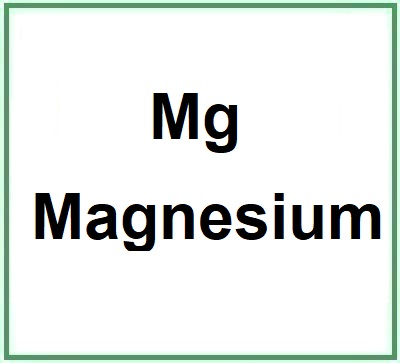Magnesium is one of the most present minerals in the human body and half of the total amount is found in the bones.
Magnesium acts as a co-factor in a series of enzymatic reactions that regulate the secretion of glucose and insulin, it can also reduce the frequency of migraines and heart attacks and is useful for people with atherosclerosis and diabetic heart disease (1).
It is directly or indirectly responsible for hundreds of chemical reactions in our body that affect:
- heart rhythm
- musculature
- nerves
- structure
It is found in nature in:
- green colored vegetables (the chlorophyll that provides the green color, contains it)
- peas
- beans
- walnuts, cashews, almonds
- whole grains, bran
- skin of potatoes
Magnesium is important in the metabolism of vitamin D and its actions.
Severe magnesium deficiency can lead to:
Neuromuscular hyperexcitability and warning signs can be cramps in the upper or lower limbs. (2), cardiovascular problems and arteriosclerosis (3).
On the other hand, a diet based on fruits and vegetables, which increased the magnesium content from 176mg a day to 423mg a day, reduced blood pressure in adults not classified as hypertensive (4).
In elderly people there was a lack of magnesium intake due both to the reduced appetite, to a decrease in taste and smell, to the loss of teeth and to the difficulty of daily shopping, as well as to the disaffection from cooking. Furthermore, due to age, magnesium absorption tends to decrease due to physiological issues. (5)
Many studies have focused on the optimal amount of magnesium to be taken depending on age and sex and can also be effective to counter the migraine (6).
Magnesium salts are used in treatments for preserving the integrity of the blood system, urine pH, etc. Names:
- aspartate
- carbonate
- citrate
- gluconate
- lactate
- orotate
- pyruvate
Magnesium is used in the following products:
- metals
- metal surface treatment products
- welding and welding products
- air care products.
- food supplements
It is likely that other emissions of this substance into the environment come from:
- metals
- building materials
- wood materials
- plastic materials
- floors
- furnishings
- toys
- curtains
- footwear
- leather products,
- paper and cardboard products
- electronic devices
Magnesium studies
Molecular Formula: Mg
Molecular Weight: 24.305 g/mol
UNII: I38ZP9992A
CAS: 7439-95-4 14147-08-1 199281-20-4 60616-74-2 67208-78-0 298688-48-9 1169483-41-3
EC Number: 231-104-6
PubChem Substance ID 24855356
MDL number MFCD00085308
Beilstein Registry Number 4948473
Synonyms:
- CHEMBL2146125
- KSC377C0B
- CHEBI:25107
- ANW-36470
- CTK2H7100
- ACMC-209oug
- HSDB 7065
- HSDB 654
References______________________________
(1) Foods and supplements in the management of migraine headaches. Sun-Edelstein C, Mauskop A. Clin J Pain. 2009 Jun;25(5):446-52. doi: 10.1097/AJP.0b013e31819a6f65.
(2) Rude RK, Singer FR. Magnesium deficiency and excess. Ann Rev Med. 1980;32:245–259
(3) Altura BT, Brust M, Bloom S, Barbour RL, Stempak JG, Altura BM. Magnesium dietary intake modulates blood lipid levels and atherogenesis. Proc Natl Acad Sci USA. 1990;87:1840–1844
(4) Appel LJ, Moore TJ, Obarzanek E, Vollmer WM, Svetkey LP, Sacks FM, Bray GA, Vogt TM, Cutler JA, Windhauser MM, Lin PH, Karanja N. A clinical trial of the effects of dietary patterns on blood pressure. N Engl J Med. 1997;336:1117–1124
(5) Lowik MR, van Dokkum W, Kistemaker C, Schaafsma G, Ockhuizen T. Body composition, health status and urinary magnesium excretion among elderly people (Dutch Nutrition Surveillance System). Magnes Res. 1993;6:223–232
(6) Schwartz R, Spencer H, Welsh JJ. Magnesium absorption in human subjects from leafy vegetables, intrinsically labeled with stable 26Mg. Am J Clin Nutr. 1984;39:571–576. Hunt MS, Schofield FA. Magnesium balance and protein intake level in adult human female. Am J Clin Nutr. 1969;22:367–373
![]() Magnesium
Magnesium 

